Uncover the ancient practice of Terumah in the Bible, revealing a timeless message of generosity, spirituality, and community connection.
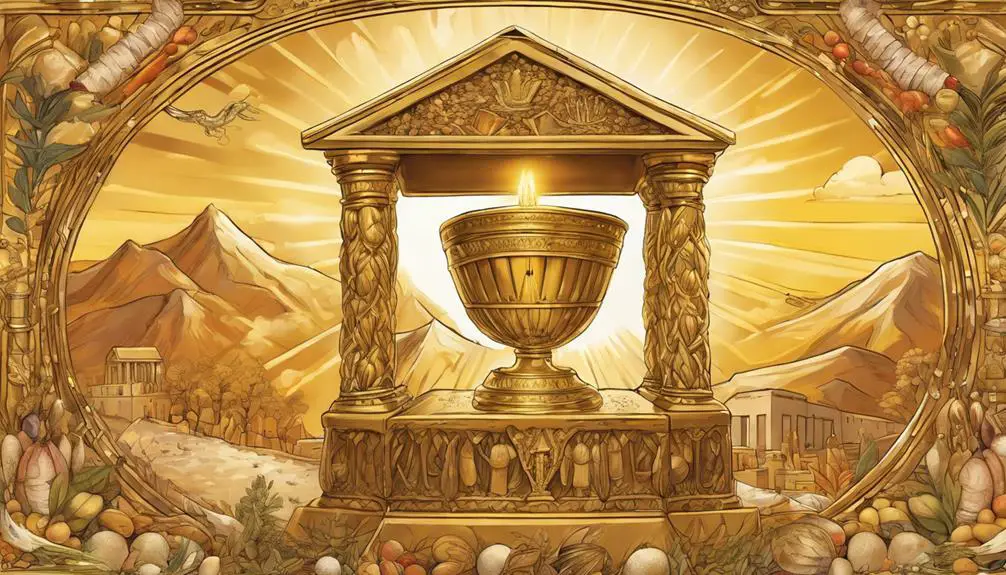
Terumah in the Bible
You might not know that the concept of Terumah in the Bible goes beyond a mere collection for the Tabernacle's construction; it embodies a profound spiritual ethos.
This ancient practice, detailed in the Book of Exodus, invited the Israelites to contribute materials and resources willingly for a sacred purpose. Yet, the layers of meaning and implications of Terumah extend far beyond its historical context, touching on themes of generosity, community, and divine connection.
As we unpack the essence and evolution of Terumah, you'll discover its relevance and resonance in contemporary life, inviting you to reflect on its enduring significance.
Key Takeaways
- Terumah signifies elevating communal responsibility through spiritual and material contributions.
- It played a crucial role in the Tabernacle's construction, uniting the community through shared effort.
- Beyond material gifts, Terumah embodies acts of generosity, symbolizing devotion and communal well-being.
- Modern interpretations of Terumah stress the importance of contributing time, knowledge, and skills to strengthen communities.
The Essence of Terumah
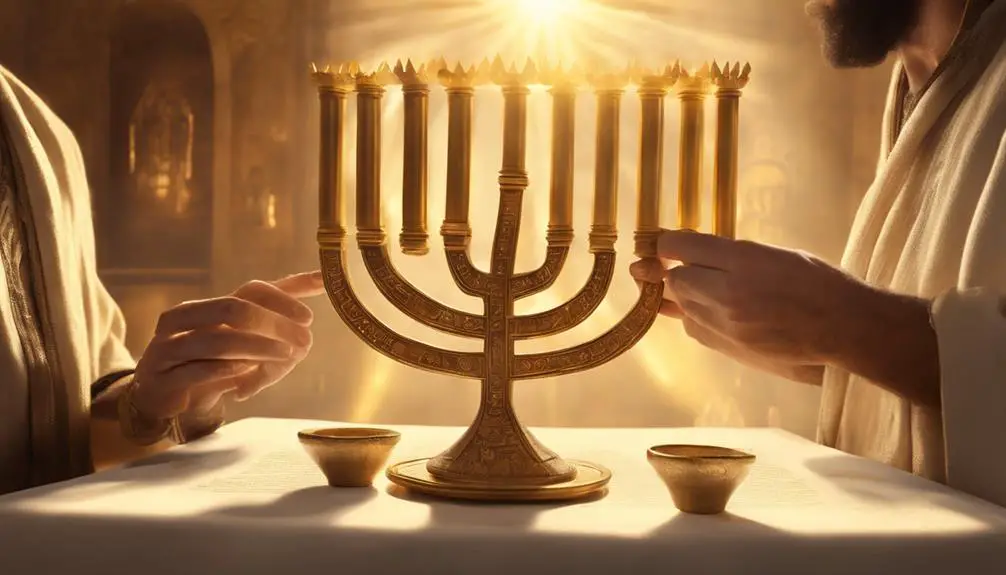
In examining the essence of Terumah, it's essential to recognize its role as a pivotal concept in biblical tradition, signifying the act of offering gifts or contributions to the sanctuary. This notion of gift offering transcends mere donation; it embodies a profound act of communal responsibility and spiritual engagement. You're invited to contemplate Terumah not just as a historical or religious formality but as a deeply embedded principle that underscores the importance of collective participation in the sustenance and sanctity of communal spaces.
Delving deeper, you'll find that Terumah represents a nuanced interaction between the individual and the community. It's a testament to the belief that personal offerings, when pooled together, create a reservoir of resources that benefit the whole. This act of giving isn't passive but rather a dynamic expression of faith, devotion, and commitment to the communal well-being. By engaging in Terumah, individuals affirm their integral role within the community, fostering a sense of belonging and shared purpose.
Thus, the essence of Terumah lies in its ability to harmonize individual contributions with communal needs, creating a symbiotic relationship that enriches both the giver and the collective. It serves as a powerful reminder of the impact unified actions can have on sustaining and elevating communal life.
Biblical Context and Origins
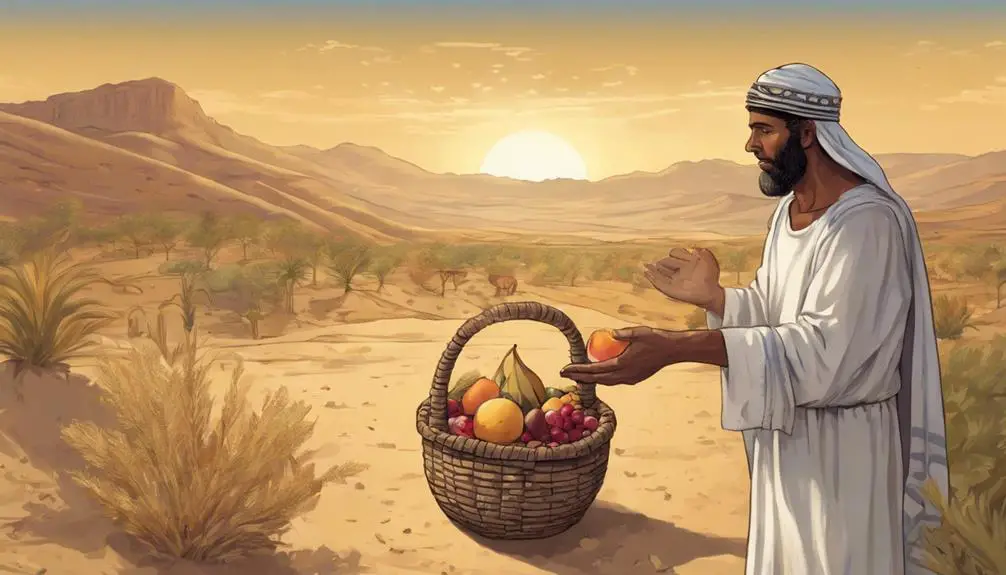
Understanding the essence of Terumah sets the stage for exploring its biblical context and origins, where you'll find its roots deeply embedded in the fabric of ancient Israelite worship practices. Delving into the Hebrew etymology of Terumah, you uncover that it originates from the root word 'rum,' meaning 'to lift up' or 'elevate.' This linguistic foundation reflects the act of elevating a portion of one's possessions as an offering to God, underscoring Terumah's role as a physical manifestation of devotion and reverence.
The practice of Terumah is first mandated in the book of Exodus, where it's described as an offering taken from the Israelites to assist in the construction and upkeep of the Tabernacle, a portable sanctuary that served as a focal point for divine worship during their desert sojourn. This ancient practice wasn't merely a ritual obligation but a communal act that symbolized the Israelites' willingness to dedicate a part of their resources to maintain a sacred space for their covenant with God.
Analyzing these ancient practices and their origins provides a window into the spiritual and communal life of the ancient Israelites, revealing the profound significance of Terumah beyond its ceremonial aspects. It embodies a tradition of generosity, sacred duty, and the intertwining of the material with the spiritual, principles that resonate through the ages.
The Tabernacle's Construction
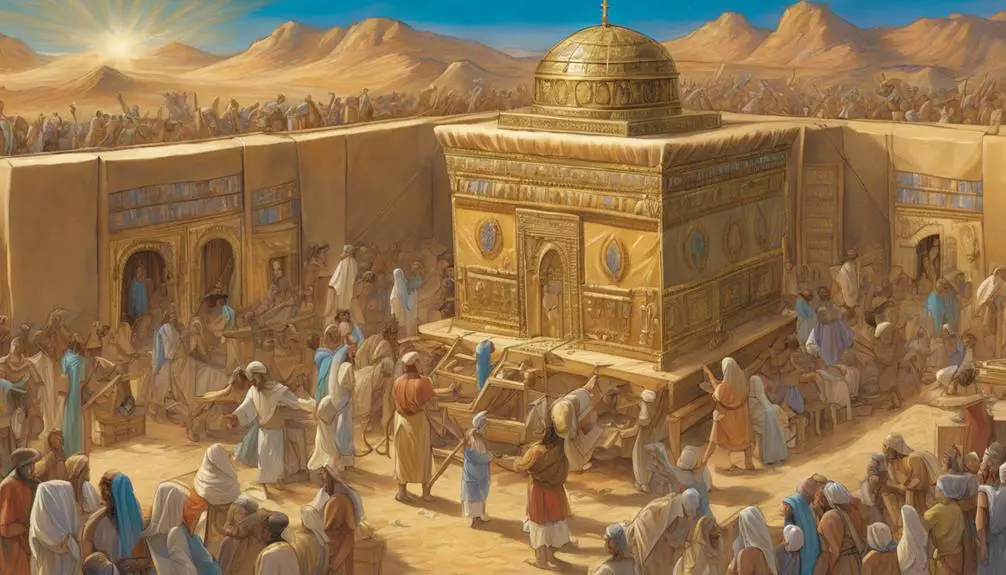
Delving into the construction of the Tabernacle, you'll find it was an intricate project, meticulously designed to embody divine specifications and foster a tangible sense of the sacred among the Israelites. The architectural details and construction timeline reveal a complex endeavor that demanded precision and spiritual dedication.
A closer examination of the Tabernacle's construction showcases the elaborate planning and execution required. Here's a brief overview:
Aspect |
Detail |
|---|---|
Foundation |
Acacia wood frames, silver bases |
Coverings |
Layers of linen, goat hair, ram skins |
Inner Sanctuary |
Gold-plated walls, veil of blue and purple yarn |
Outer Courtyard |
Bronze altar, surrounding hangings |
The construction timeline, though not explicitly detailed in terms of duration, suggests a continuous, concerted effort by skilled artisans under the guidance of Bezalel and Oholiab. They followed a divine blueprint, ensuring every cubit and component resonated with symbolic meaning and purpose.
Analyzing the Tabernacle's construction, it's clear this wasn't merely an architectural feat; it was a spiritual journey materialized through wood, fabric, and metal. The precision in the details and the dedication to the timeline reflect a profound commitment to creating a dwelling place for the divine.
Materials and Donations

As we explore the materials and donations required for the Tabernacle's construction, it becomes evident that the community's collective effort played a pivotal role in realizing this sacred endeavor. The process of material sourcing and donation logistics reveals a meticulously organized operation, highlighting the importance of each contribution, no matter its size or nature.
Material sourcing for the Tabernacle was no small feat, demanding a wide array of resources from precious metals such as gold, silver, and bronze to textiles and fine woods. This diversity in requirements necessitated a well-coordinated approach to ensure that the needs of construction were met without delay. The donations, sourced from the community, weren't merely a collection of materials but a testament to the collective spirit and dedication towards a common goal.
Donation logistics, on the other hand, involved an intricate system of collection, allocation, and utilization of resources. This system ensured that the materials donated were used judiciously and in accordance with the divine instructions for the Tabernacle's construction. The strategic planning and execution of these logistics underscored the community's commitment to fulfilling the commandment of building a dwelling place for the Divine Presence, demonstrating a profound level of faith and obedience.
Spiritual Significance
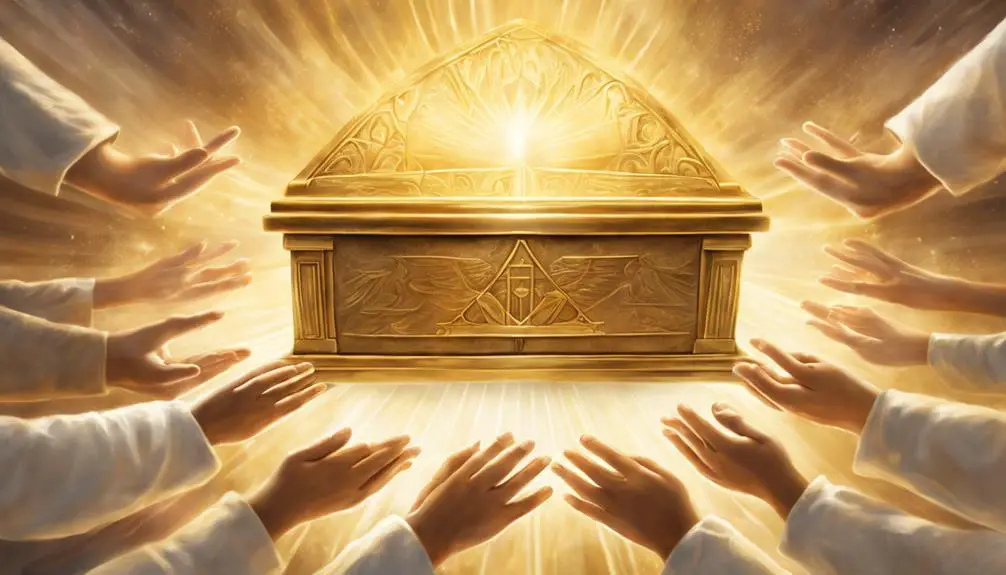
The spiritual significance of Terumah in the construction of the Tabernacle transcends mere material contribution, embodying a deeper communal connection with the divine. This directive, rooted in divine instruction, wasn't just about gathering resources; it was a call to the heart of the community, inviting each member to invest personally in the creation of a sacred space. The act of giving Terumah, therefore, becomes not just an act of obedience but an expression of individual and collective devotion.
By analyzing the text, you'll find that divine instruction meticulously outlines not only the materials needed but also the spirit in which these contributions should be made. This specificity underscores the importance of intentionality behind each community contribution, elevating the act of giving to a form of worship. The emphasis on willing contributions highlights the relational aspect between the community and the divine, suggesting that the quality of one's heart is as crucial as the material offering itself.
In essence, Terumah serves as a profound intersection of the material and the spiritual, where community contribution becomes a medium through which individuals connect with and reflect upon their relationship with the divine. Through this lens, Terumah represents a multifaceted act of faith, devotion, and communal unity, deeply entwined with the spiritual fabric of the community.
Contemporary Reflections
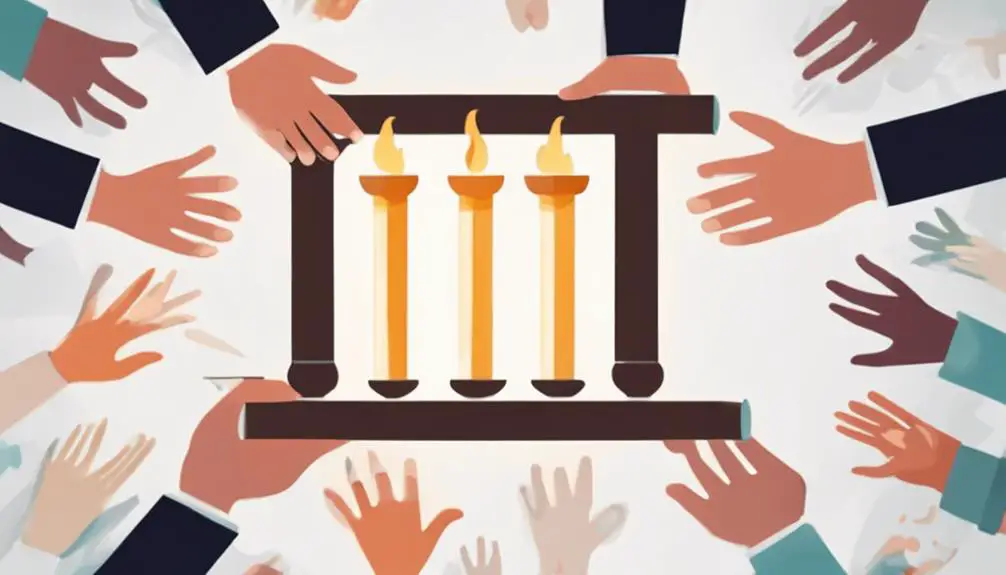
Reflecting on the ancient practice of Terumah, we find its principles resonate deeply with contemporary efforts to foster community and spirituality in our modern world. The concept of Terumah, a donation or offering given with a generous heart, transcends its historical religious context, evolving into a metaphor for the ways in which we contribute to our communities today. Modern interpretations of Terumah emphasize the significance of giving not just materially, but also through sharing time, knowledge, and skills to uplift and support one another.
Communal engagement, inspired by the spirit of Terumah, suggests a model for living that values cooperation and mutual respect. In today's fast-paced, individualistic society, revisiting such ancient practices encourages a shift towards more collectivist values, highlighting the importance of working together for the common good. This approach fosters a sense of belonging and purpose, elements that are often missing in contemporary life but are essential for spiritual and communal well-being.
In essence, the enduring legacy of Terumah offers valuable insights into how we might cultivate stronger, more connected communities. By embracing its ethos, we can create inclusive spaces that honor our shared humanity and nurture our collective spirit.
Frequently Asked Questions
How Did the Practice of Giving Terumah Evolve After the Destruction of the Second Temple, Given Its Strong Association With the Tabernacle and Later the Temple in Jerusalem?
After the Second Temple's destruction, you'll find terumah's practice significantly transformed. Without a physical temple for offerings, Jews adapted by emphasizing charitable acts and spiritual dedication as forms of terumah.
This shift, deeply rooted in historical analysis, reflects a broader adaptation within Jewish ritual practice, aligning with the concept of Temple Reconstruction in a metaphorical sense. This evolution underscores a resilient adaptability, maintaining spiritual continuity even in the face of monumental loss.
In What Ways Have Modern Jewish Communities Adapted the Concept of Terumah to Fit Contemporary Practices, Especially in Places Far Removed From the Land of Israel?
You'll find that modern Jewish communities have creatively adapted the concept of terumah, especially in areas far from Israel. They've embraced community fundraisers and digital donations as contemporary equivalents, ensuring that the spirit of giving thrives, even in a digital age.
These adaptations allow for continued support and connection within the community, reflecting a deep understanding and evolution of ancient practices to suit today's global and interconnected world.
Are There Any Notable Differences in How the Concept of Terumah Is Interpreted or Practiced Among the Various Jewish Denominations, Such as Orthodox, Conservative, and Reform Judaism?
As you delve into the nuances of contemporary Jewish practices, it's clear that interpretations of Terumah terminology and ritual variations span across Orthodox, Conservative, and Reform Judaism.
Each denomination uniquely adapts its practices, reflecting their theological stance. Orthodox communities often adhere strictly to traditional interpretations, while Conservative and Reform movements might incorporate more flexible approaches, demonstrating a spectrum of observance that evolves with modern contexts, yet remains rooted in ancient tradition.
How Is the Concept of Terumah Addressed in the Writings of Jewish Philosophers and Theologians Throughout History, Particularly in the Context of Ethical and Moral Obligations?
Jewish philosophers and theologians have long grappled with the ethical and moral implications of Divine Commandments, including the act of giving. They argue that such actions aren't just obligations but pathways to Spiritual Elevation.
Through their analyses, they've highlighted how generosity transcends mere duty, becoming a transformative act that enriches both giver and receiver, fostering a deeper connection to spiritual principles and communal well-being.
This perspective reshapes our understanding of moral responsibility.
Can Parallels or Influences of the Terumah Concept Be Identified in Other Religious Traditions or Cultural Practices Outside of Judaism, Indicating a Broader Historical or Anthropological Significance?
You're diving into whether certain practices in various religions or cultures mirror the concept of terumah, hinting at a broader historical or anthropological significance.
Through cultural exchanges and anthropological studies, you'll uncover parallels that suggest a shared human inclination towards contributing to communal or sacred purposes.
This exploration reveals a fascinating tapestry of human generosity, highlighting how different societies have conceptualized and integrated the act of giving into their spiritual and communal lives.
Conclusion
As you've journeyed through the concept of terumah, you've uncovered its roots in ancient texts, revealing its pivotal role in constructing the Tabernacle. The materials and donations weren't merely physical contributions; they symbolized a deeper, spiritual offering.
This exploration sheds light on terumah's profound significance, urging us to reflect on our own contributions to the sacred spaces in our lives. What might seem like a historical footnote is, in fact, a call to action, beckoning us to ponder: What're we willing to offer?



Sign up